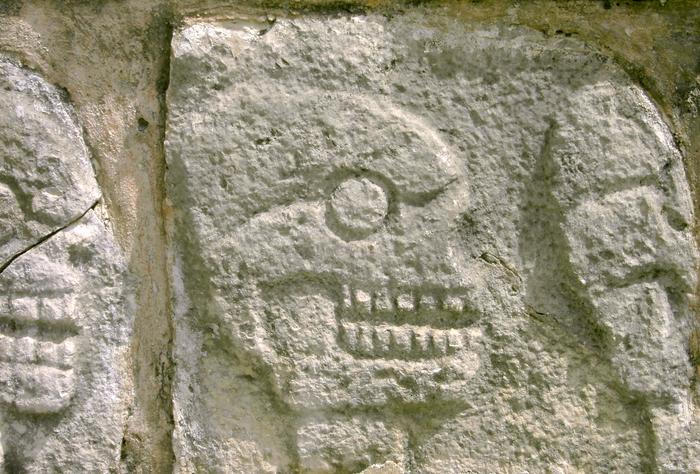Chichén Itzá, the iconic ancient Maya city in Mexico’s Yucatan peninsula, has long been shrouded in mystery, particularly regarding its extensive evidence of ritual killing. A recent genetic investigation conducted by an international team of researchers has shed new light on the role and context of child sacrifice at this enigmatic archaeological site.
The study, which focused on the remains of 64 children ritually interred within a subterranean chamber known as a chultún, yielded unexpected results. Dating of the remains revealed that the chultún was used for mortuary purposes for more than 500 years, with most of the children being interred during Chichén Itzá’s 200-year political apex between 800 to 1,000 AD.
All Sacrificed Children Were Male, Many Closely Related
Contrary to the widespread belief that females were the primary focus of sacrifice at Chichén Itzá, genetic analysis revealed that all 64 tested individuals were male. Furthermore, at least a quarter of the children were closely related to at least one other child in the chultún, with some having consumed similar diets, suggesting they were raised in the same household.
“Our findings showcase remarkably similar dietary patterns among individuals exhibiting a first- or second-degree familial connection,” says co-author Patxi Pérez-Ramallo, postdoctoral researcher at the Department of Archaeology and Cultural History, NTNU University Museum, Trondheim, Norway and the MPI-GEA.
Perhaps the most surprising finding was the identification of two pairs of identical twins. “We can say this with certainty because our sampling strategy ensured we would not duplicate individuals,” says Kathrin Nägele, co-author and group leader at the MPI-EVA.
Ritual Sacrifice Linked to Sacred Maya Texts
The discovery of twin sacrifices at Chichén Itzá holds significant cultural implications, as twins play a central role in the origin stories and spiritual life of the ancient Maya. The sacred K’iche’ Mayan Book of Council, known as the Popol Vuh, features twin sacrifice as a central theme, with the Hero Twins Hunahpu and Xbalanque undergoing repeated cycles of sacrifice and resurrection to outwit the gods of the underworld.
“The similar ages and diets of the male children, their close genetic relatedness, and the fact that they were interred in the same place for more than 200 years point to the chultún as a post-sacrificial burial site, with the sacrificed individuals having been selected for a specific reason,” says Oana Del Castillo-Chávez, co-author and researcher in the Physical Anthropology Section at the Centro INAH Yucatán.
The study also challenges the lurid tales of young women and girls being sacrificed at the site, which were falsely popularized in early 20th century accounts. “This study, conducted as a close international collaboration, turns that story on its head and reveals the deep connections between ritual sacrifice and the cycles of human death and rebirth described in sacred Maya texts,” says Christina Warinner, John L. Loeb Associate Professor of the Social Sciences and Anthropology at Harvard University and a group leader at the MPI-EVA.
The genetic information obtained at Chichén Itzá has also provided insights into the long-term genetic impact of colonial-era epidemics on Indigenous populations. Evidence of genetic positive selection in immunity-related genes, specifically for genetic variants protective against Salmonella infection, was found in present-day Maya residents of the local community of Tixcacaltuyub.
“The present-day Maya carry the genetic scars of these colonial-era epidemics,” says lead author Rodrigo Barquera, immunogeneticist and postdoctoral researcher at the MPI-EVA. “Multiple lines of evidence point to specific genetic changes in the immune genes of present-day Mexicans of Indigenous and mixed-ancestry descent that are linked to enhanced resistance to Salmonella enterica infection.”
The study not only dispels outdated hypotheses and assumptions but also provides new insights into the biological consequences of past events and the cultural lives of the ancient Maya. “It is significant to me as a research professor of indigenous origin that I can contribute to the construction of knowledge,” says María Ermila Moo-Mezeta, Mayan co-author of the study and researcher at the Autonomous University of Yucatán (UADY). “I consider the preservation of the historical memory of the Mayan people to be important.”


